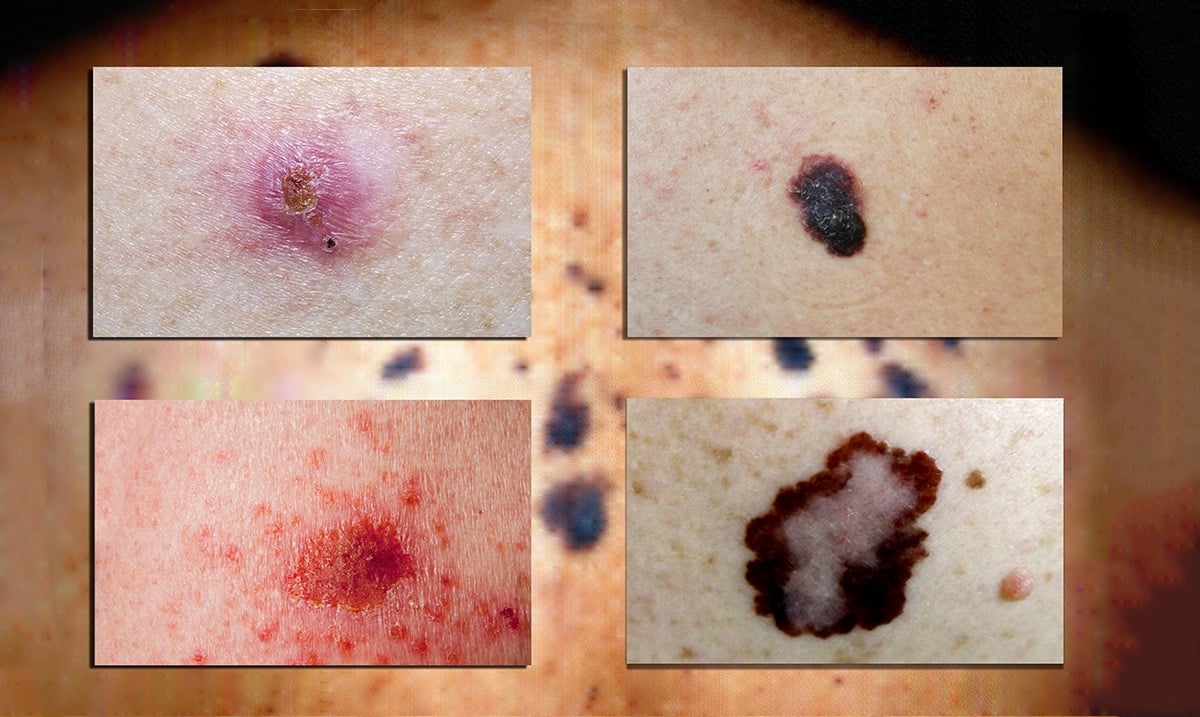Sure, we all have moles and imperfections on our skin but knowing what could be cancerous and what clearly isn’t is no easy task. While it might seem like you’ve had that small growth for a while now, its presence could mean something much more sinister than you realize.
For those who do not know skin cancer is not one size fits all, it comes in many different forms and with that also holds a lot of different signs. Two main causes of skin cancer are the sun’s UV rays and tanning machines but for the most part, if caught early enough skin cancer is not a huge issue. That being said, if you notice something and refuse to get it checked or neglect it for too long, you could end up with a serious problem that could cost you your life.
Considering one in five people here in the US alone will develop skin cancer by the time their seventy years old, being aware of it and its signs are crucial. Some of the different kinds of skin cancer are known as basal cell carcinoma, squamous cell carcinoma, melanoma, and Merkel cell carcinoma. Warning signs for each of these are similar but some hold their own and should be noted.
Cancer.org wrote as follows in regards to skin cancer and spotting its presence:
Skin cancer is by far the most common type of cancer. If you know what to look for, you can spot warning signs of skin cancer early. Finding it early, when it’s small and has not spread, makes skin cancer much easier to treat.
Some doctors and other health care professionals include skin exams as part of routine health check-ups. Many doctors also recommend that you check your own skin about once a month. Look at your skin in a well-lit room in front of a full-length mirror. Use a hand-held mirror to look at areas that are hard to see.
Use the “ABCDE rule” to look for some of the common signs of melanoma, one of the deadliest forms of skin cancer:
Asymmetry
One part of a mole or birthmark doesn’t match the other.
Border
The edges are irregular, ragged, notched, or blurred.
Color
The color is not the same all over and may include shades of brown or black, sometimes with patches of pink, red, white, or blue.
Diameter
The spot is larger than ¼ inch across – about the size of a pencil eraser, although melanomas can sometimes be smaller than this.
Evolving
The mole is changing in size, shape, or color.
Basal and squamous cell skin cancers are more common than melanomas, but they are usually very treatable.
Basal cell carcinomas, or cancers, usually grow on areas that get the most sun, such as the face, head, and neck. But they can show up anywhere. Look for:
Flat, firm, pale or yellow areas, similar to a scar.
Raised reddish patches that might be itchy.
Small, pink or red, translucent, shiny, pearly bumps, which might have blue, brown, or black areas.
Pink growths with raised edges and a lower area in their center, which might contain abnormal blood vessels spreading out like the spokes of a wheel.
Open sores (which may have oozing or crusted areas) that don’t heal or that heal and then come back.
When it comes to figuring out what is cancerous and isn’t the truth is, we just won’t know offhand. We have to go in and get things tested to find out and make sure we’re not facing melanoma or something else of the sort. However, the more aware we are of what these things are and how the different imperfections on our bodies are reacting as days pass the more active we can be in preventing issues for ourselves and others.
To see examples and figure out if you can spot cancerous skin issues or not please feel free to check out the video below. Have you ever had or known someone who dealt with skin cancer? I for one plan to avoid it as best I can.

